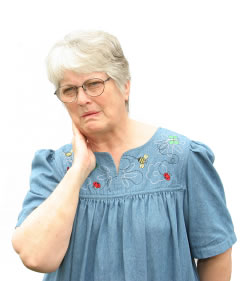
© iStockphoto
When people have similar injuries, why do some end up with chronic pain while others recover and are pain free? The first longitudinal brain imaging study to track participants with a new back injury has found the chronic pain is all in their heads –- quite literally.
A new Northwestern Medicine study shows for the first time that chronic pain develops the more two sections of the brain — related to emotional and motivational behavior — talk to each other. The more they communicate, the greater the chance a patient will develop chronic pain.
The finding provides a new direction for developing therapies to treat intractable pain, which affects 30 to 40 million adults in the United States.
Researchers were able to predict, with 85 percent accuracy at the beginning of the study, which participants would go on to develop chronic pain based on the level of interaction between the frontal cortex and the nucleus accumbens.
The study is published in the journal Nature Neuroscience.
“For the first time we can explain why people who may have the exact same initial pain either go on to recover or develop chronic pain,” said A. Vania Apakarian, senior author of the paper and professor of physiology at Northwestern University Feinberg School of Medicine.
“The injury by itself is not enough to explain the ongoing pain. It has to do with the injury combined with the state of the brain. This finding is the culmination of 10 years of our research.”
The more emotionally the brain reacts to the initial injury, the more likely the pain will persist after the injury has healed. “It may be that these sections of the brain are more excited to begin with in certain individuals, or there may be genetic and environmental influences that predispose these brain regions to interact at an excitable level,” Apkarian said.
The nucleus accumbens is an important center for teaching the rest of the brain how to evaluate and react to the outside world, Apkarian noted, and this brain region may use the pain signal to teach the rest of the brain to develop chronic pain.
“Now we hope to develop new therapies for treatment based on this finding,” Apkarian added.
Chronic pain participants in the study also lost gray matter density, which is likely linked to fewer synaptic connections or neuronal and glial shrinkage, Apkarian said. Brain synapses are essential for communication between neurons.
“Chronic pain is one of the most expensive health care conditions in the U. S. yet there still is not a scientifically validated therapy for this condition,” Apkarian said. Chronic pain costs an estimated $600 billion a year, according to a 2011 National Academy of Sciences report. Back pain is the most prevalent chronic pain condition.


